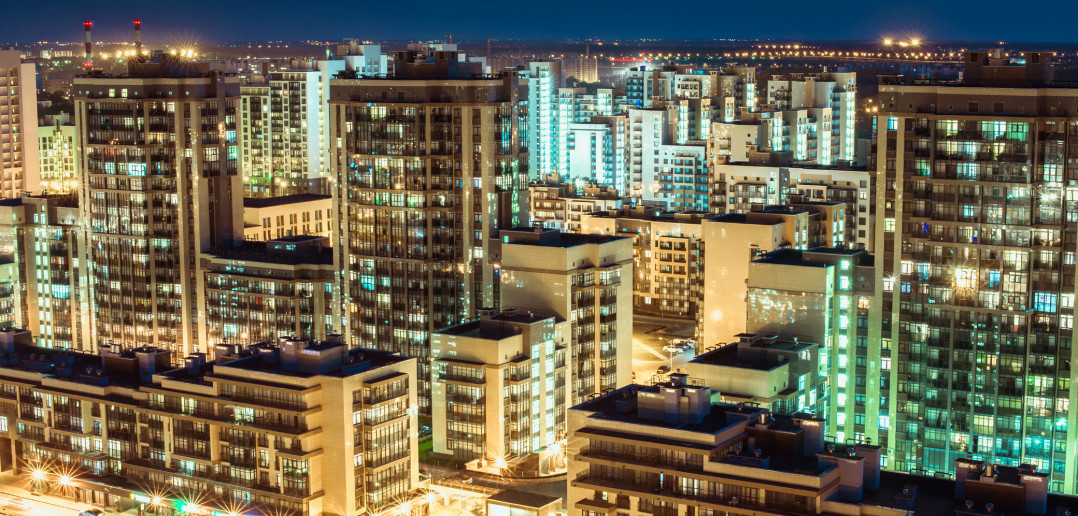Prior to 2014, it was easy to make money in Russia. Entrepreneurs were accustomed to bank deposits yielding 10%, property investments earning 15% and businesses with no less than a 30% margin. These so-called « fat years » saw Russians earning higher profits, leading to lavish spending habits.
Under such conditions, it was difficult to sell commercial property that earned 5–10% because buyers shunned foreign property with lower yields compared to what they could gain in Russia. The “extra money” mindset meant clients were mainly interested in buying holiday homes abroad.
Many of those who bought made high profits as prices in Europe and the USA grew by 20–30% on average. Those who bought high-risk property abroad also benefitted due to market growth; even when risks materialised, property price increases levelled off the losses.
The crisis that began in 2014 shook Russian property owners. Rental revenue and cap rates declined, while foreign exchange losses ran at 60% on average, basically erasing any earnings. Rental agreements in Russia—the majority of which were in US dollars—switched back to Rubles. Today, a number of investors regret putting capital into the domestic market, saying they should have bought commercial property overseas three years ago instead.
In 2014–2015, a « domino effect » hit Russian buyers abroad. The ruble depreciated as a result of the oil downturn, losing twice its value against the US dollar and 60% against the euro between March 2014 and March 2016. Consequently, a €200,000 property costs nearly double: a Russian citizen with a Ruble income now needs almost 16 million rubles against 10 million two years ago.
In turn, Russian overseas investments plummeted. According to the Central Bank of the Russian Federation, the total transaction volume for foreign property purchases was halved: from over $2 billion in 2014 to $962 million in 2015. While the quarterly investment volume ran at $400–500 million in 2014, in 2015 it did not exceed $300 million. The monetary crisis also affected buyer strategies as they « sobered up » and found new priorities. Nowadays, they are not spending; they are buying to let in order to earn revenue in a foreign currency.
What changed in 2015?
Today, investors are facing new challenges with weak economic growth in many countries, international conflicts, migration and the refugee crisis, new transparency measures in banking and substantially stronger pressure from tax authorities. The cheap money policy that killed any hope of yields on European bank deposits is also of particular consequence. As a result, people all over the world have been actively investing in property, and Russian nationals are no exception. According to estimates, in Germany there are about 100,000 active investors from Europe, the USA and Asia who are constantly on the lookout for high-quality offers.
After the crisis, Russian investors turned to strategies aimed at maintaining capital such as long-term investment into a rental business in a stable country (even if not it’s not always very profitable). According to the Tranio CIS Investor Survey 2015, 52% of overseas property buyers stated that they were not going to sell their assets in the foreseeable future, but expect to own them for many years and transfer them to their children. As for the portion of those planning to sell property in the next 2–3 years, they saw their shares drop from 40% in 2013 down to 3% in 2015.
Of the two most common investment strategies — the rental business (Core) and redevelopment (Added Value) – Russians prefer the first. According to another survey by Tranio, 65% of real estate agents believe that no more than 10% of Russian-speaking clients are involved in redevelopment projects. Complexity is considered the main deterrent: buying a property to repair, put on the market and later sell requires experience and skills or finding a company to fully manage the process.
Russian investors have matured, and experience has brought them to more realistic yield expectations. Those investing in European property need a 2–3% cap rate p.a. in foreign currency to maintain their capital, while the rate of return on investment from a simple rental business ranges from 5% to 10% depending on the location, the investment volume and the appetite for risk.
Some may not think it’s much but, compared to alternative vehicles like deposits and securities, investing in property is more beneficial thanks to the market’s low volatility and risks. In the long run, these investors want to guarantee a comfortable future for their children and themselves when they retire.
Nowadays, lifestyle purchases have been replaced by investment transactions. A flat near the sea for personal use doesn’t earn money. In fact, it takes a big toll on shrinking income, which is why many holiday home owners are selling. At the same time, prospective buyers who were keen to buy a holiday home in Spain or Bulgaria have cancelled the transaction or put the idea on hold. According to a study by Tranio.com, demand for overseas villas and apartments for personal use was halved in 2015, but interest in commercial property grew by 20%.
As practice shows in times of crisis, demand for commercial property increases and investors strive to move their capital to more reliable markets, protecting accumulated funds from risks at home and earning income in a foreign currency. The trend is characteristic of many nationalities, not just Russians. For instance, according to the U.S. National Association of Realtors, in 2015 the number of Americans buying holiday properties for personal use dropped from 21% to 16%, but the percentage of commercial property investors remained the same (19%).
Why do Russians still buy property abroad?
Clients today tend to be are entrepreneurs who have earned their capital during the « fat years »: the upper middle class and high net worth individuals. Property investment has always been an attractive option when finances allow. Many go on to buy another for their children and perhaps another to rent out, while those who have the means choose commercial property. An investor recently explained why he was purchasing property in Bavaria: « For my children. The land area is limited. It will always guarantee a good income. »
Currently, Russian real estate investors are motivated by the following:
— protecting investments from economic and political risks in Russia;
— creating a personal wealth fund;
— using property as inheritance for their children, guaranteeing financial well-being;
— obtaining a European residence permit.
What to expect in the future
It’s easier and safer for Russian investors whose main source of income is a non-real estate business at home to own rental property, which is why flats, commercial apartment buildings and mini- hotels are in demand. According to the forecasts and estimates of market experts, these types of property will remain popular with international investors over the coming decade.
It’s my honest opinion that, in 2016, the volume of holiday home transactions will decline by another 20–30% but that rental property investments will continue to rise. On the whole, foreign real estate is popular because it is a strong contender in terms of safeguarding capital, especially for buyers from emerging but volatile economies like Russia.
Top image: St. Petersburg at night, © Myskina6 / Shutterstock



